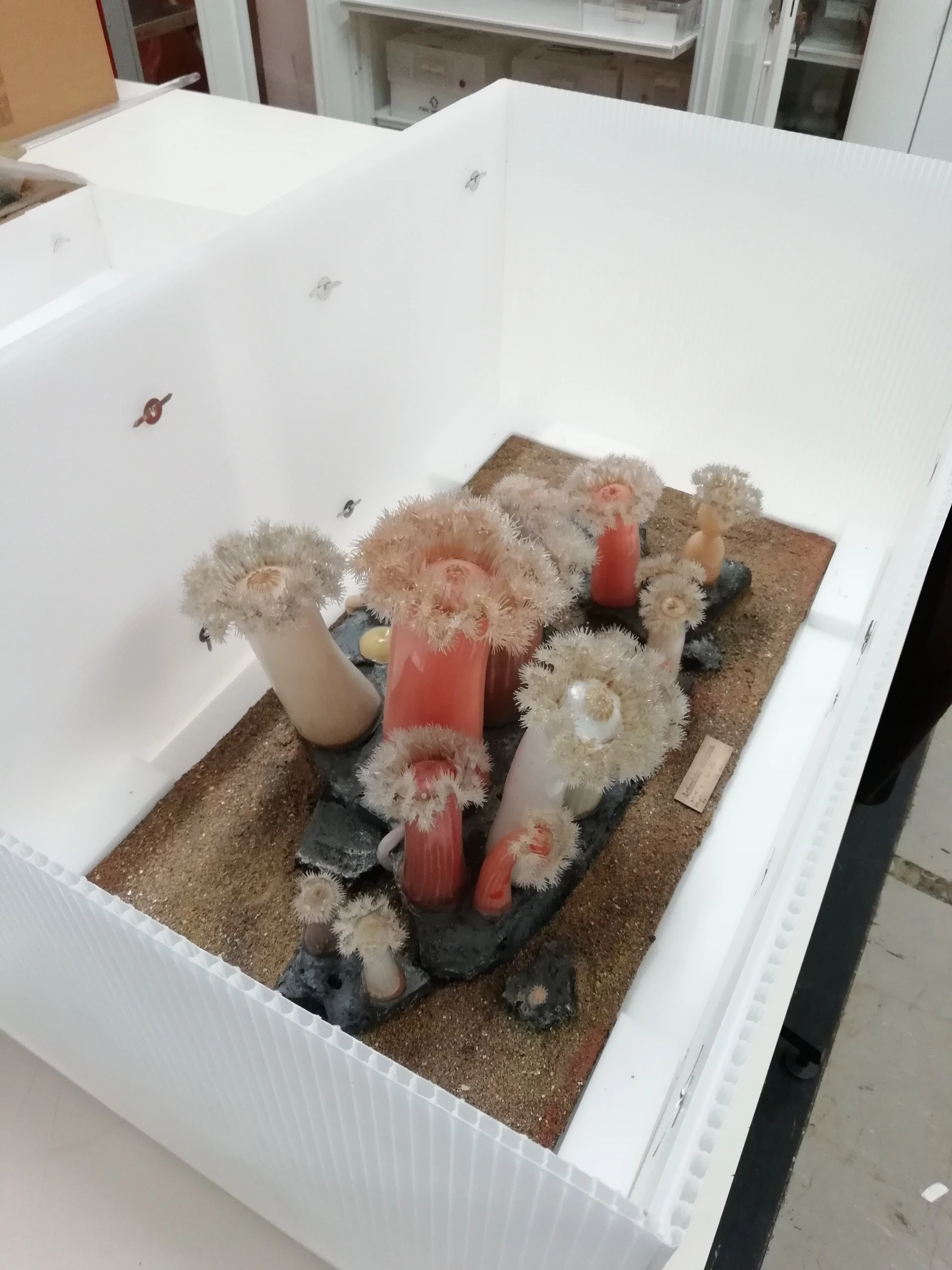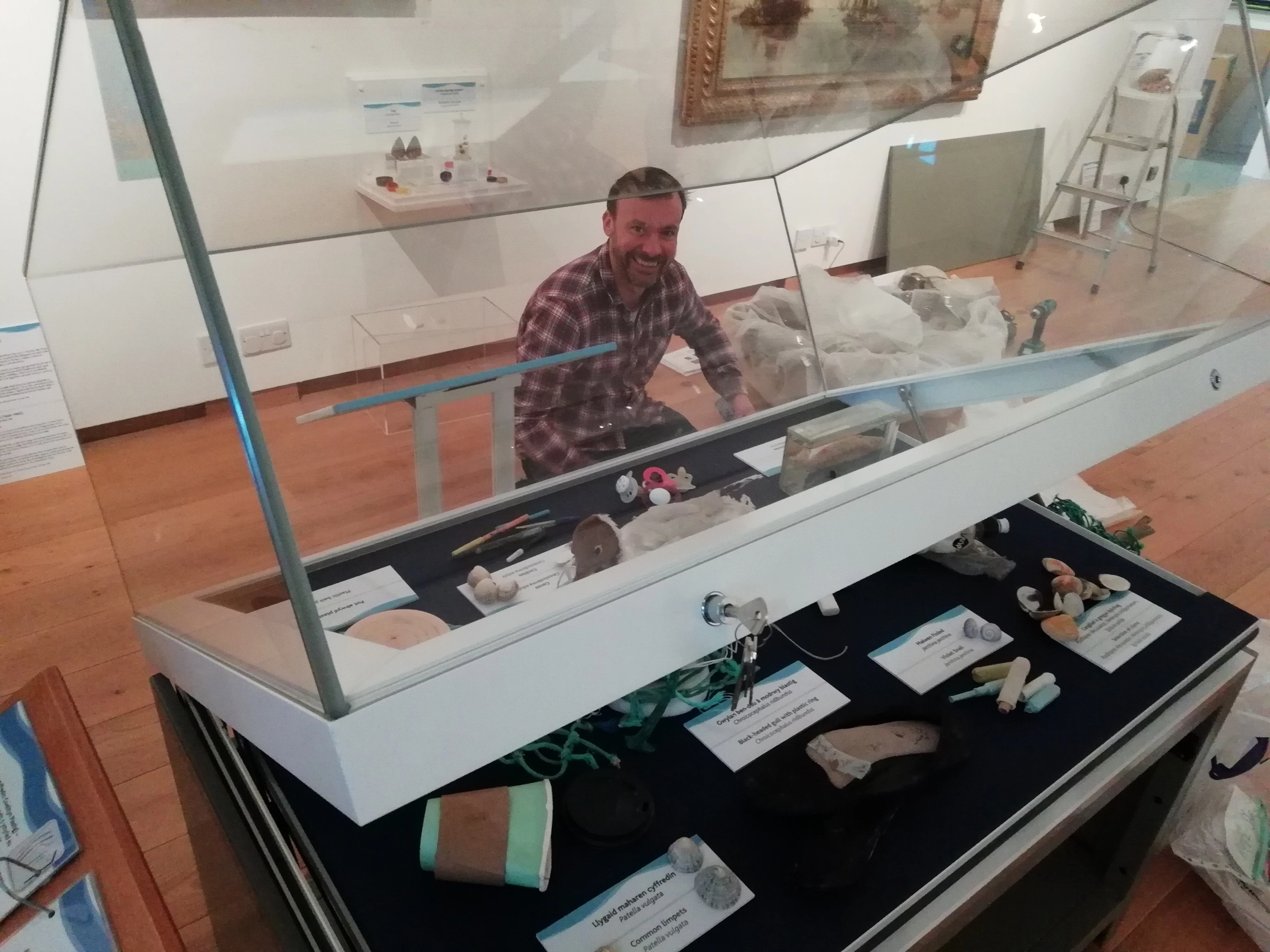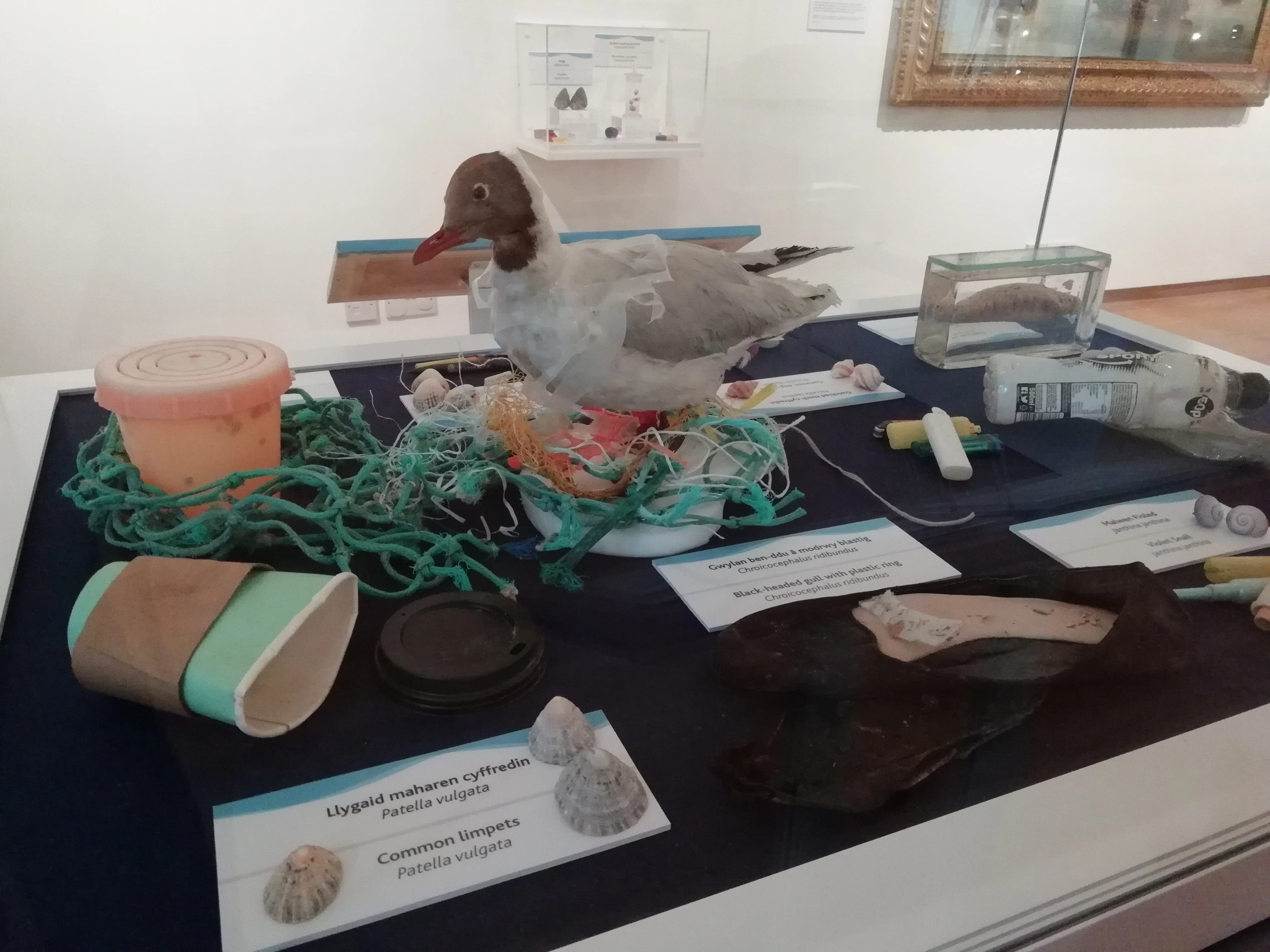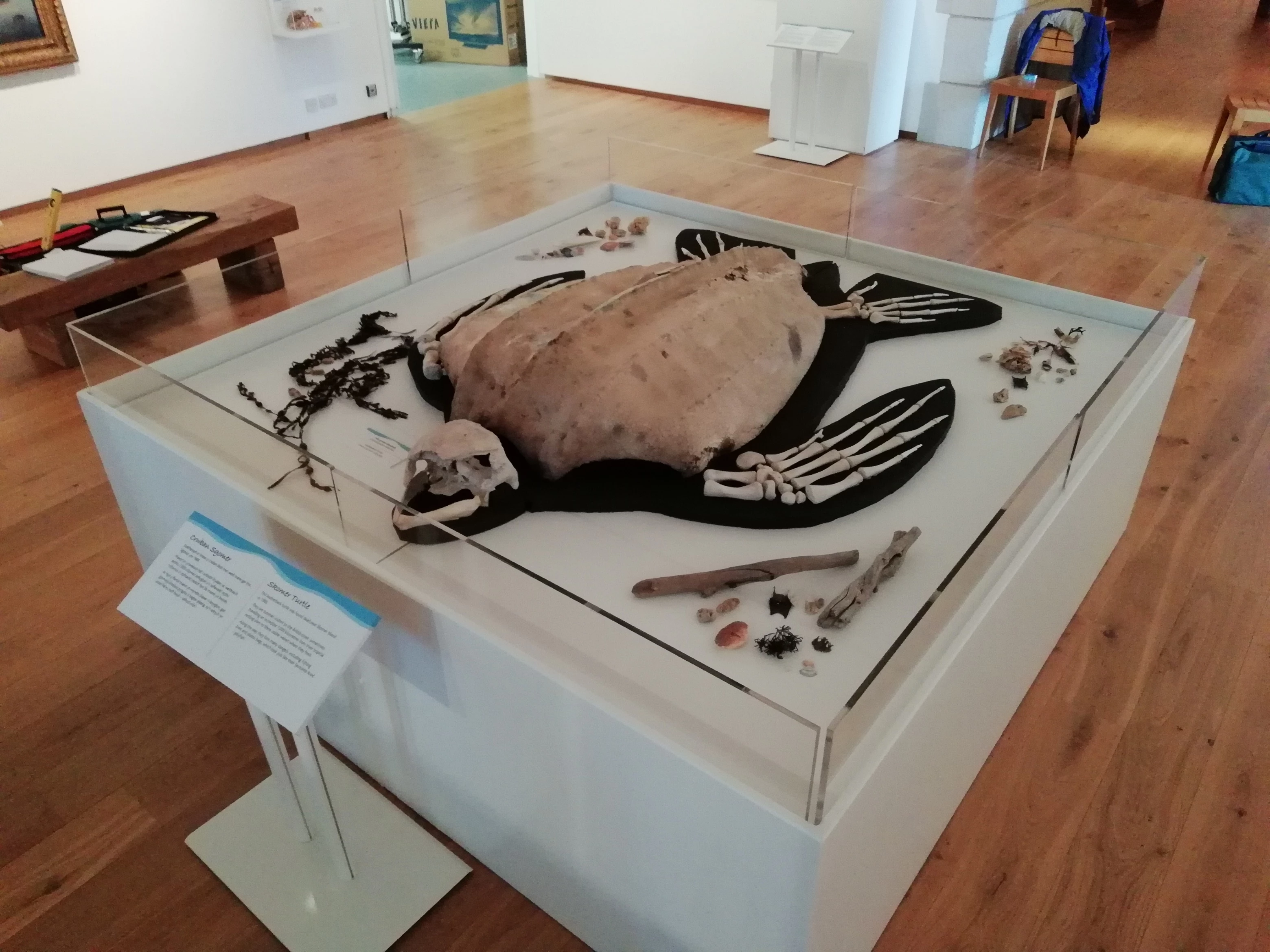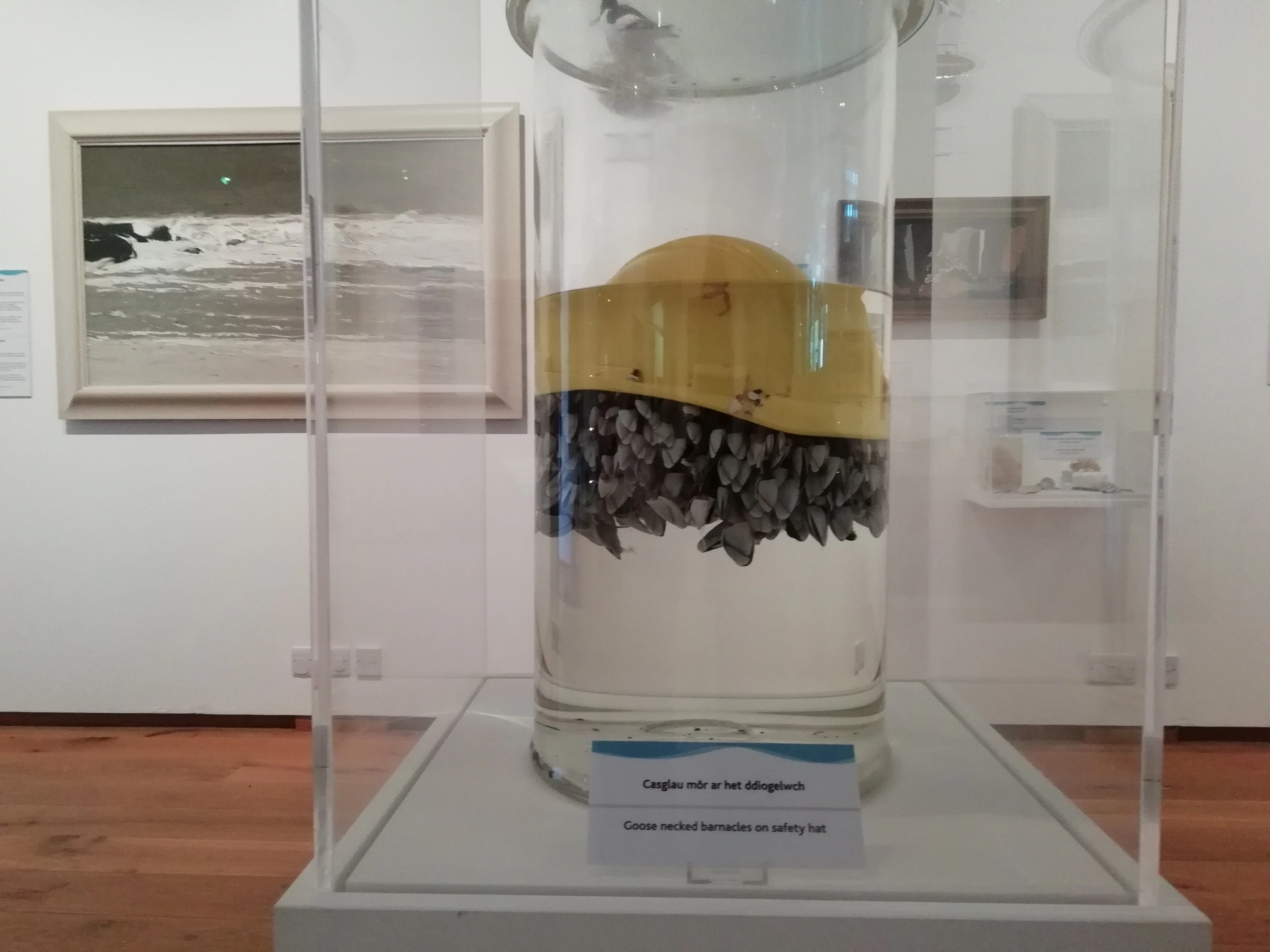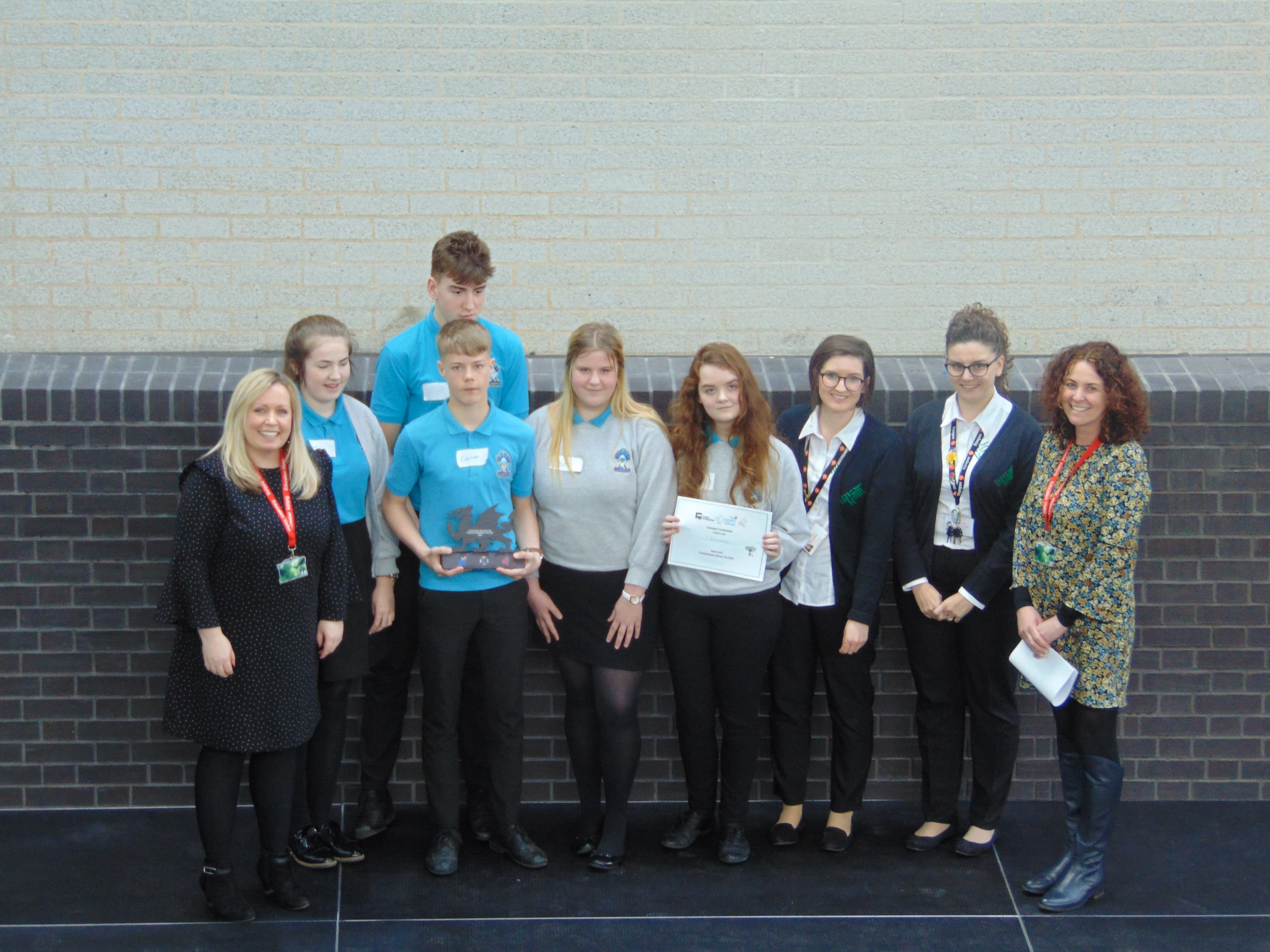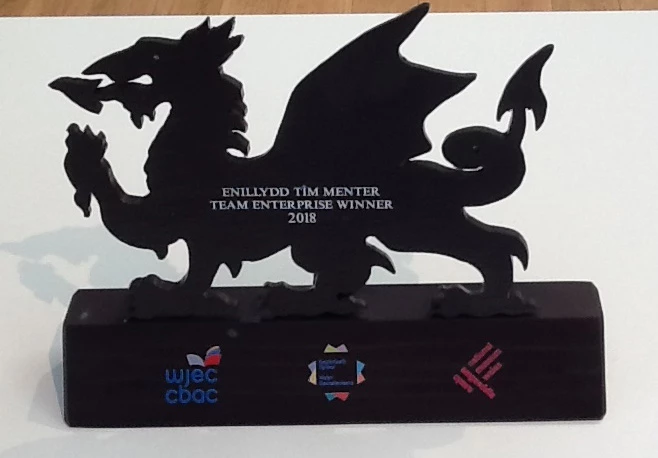Coast – an exhibition fusing art, science and museum activism
, 5 October 2018
Over the past few months the museum has been working closely with colleagues at the beautiful Oriel y Parc gallery in St Davids to bring together an exhibition celebrating Wales ‘Year of the Sea’ called ‘Coast’.
The exhibition fuses artworks and natural science specimens specially selected by the Oriel y Parc team from Amgueddfa Cymru’s collections, and displays these alongside some of the recent museum activisim work of Amgueddfa Cymru’s 'Youth Forum Group' highlighting the issues of plastic pollution.
The multidisciplinary nature of the display explores how the sea has inspired artists for centuries, highlights the biodiversity of the Pembrokeshire coast, and how plastic now impacts on the environment and our everyday life.
Centre piece to the art works is Jan van de Cappelle’s masterpiece ‘A Calm’, surrounded by sea and coast inspired paintings from a selection of other artists including Cedric Morris and John Kyffin Williams. Amongst these works are specimens from the natural science collections capturing the richness of Pembrokeshire's wildlife, including the skeleton of a leatherback turtle found dead on Skomer Island in 1988.
The turtle had in the past been on display at the visitor centre on Skomer, but was removed a number of years back when the buildings on the Island underwent redevelopment. In need of some repairs and cleaning, the specimen became an excellent project for one of our conservation student placements at the museum, Owen Lazzari. The end result has enabled us to bring the specimen back to Pembrokeshire to form one of the centrepieces of the exhibition.
Other highlights from the natural science collections include one of our historic Blaschka glass models dating from the late 1800s, and a Goose barnacle covered builder's helmet found off the Welsh Coast.
Further information can be found on Oriel y Parc's website: https://www.pembrokeshirecoast.wales
